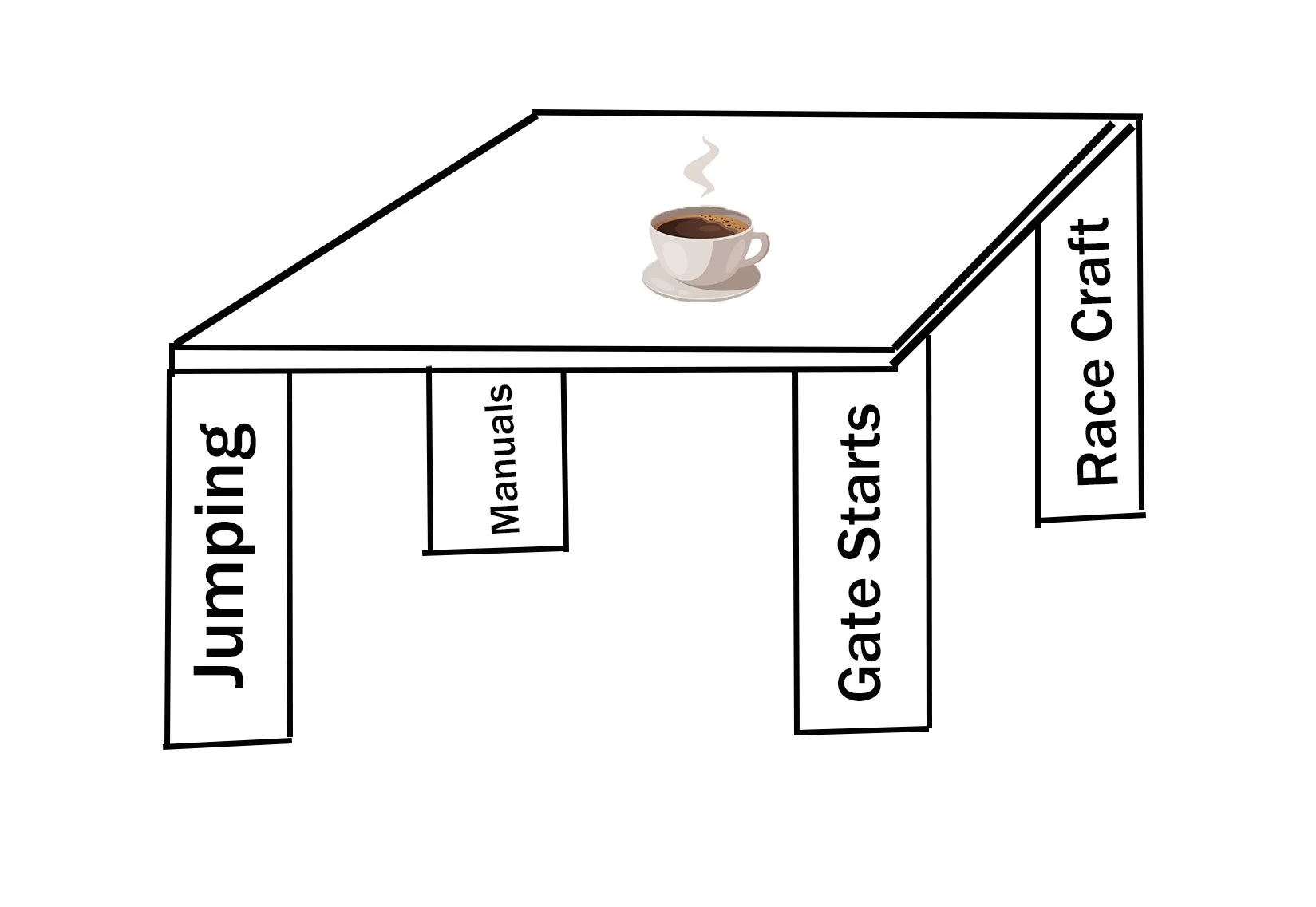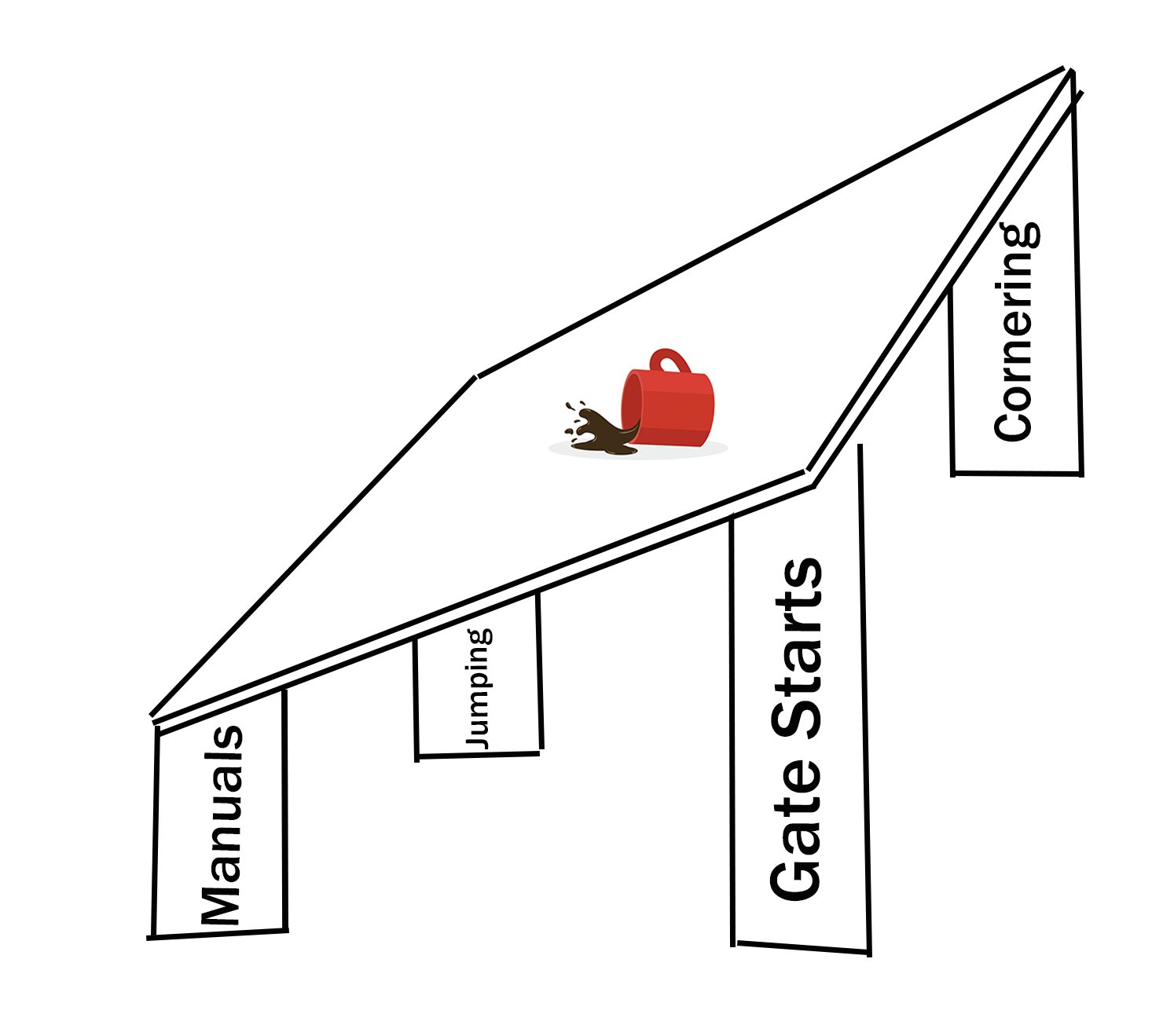Working on your weaknesses
It may seem quite obvious, but the fastest way to bridge the gap to your competition is by identifying and focusing your training on your weaknesses.
However, this is often easier said than done.
Typically, as athletes, it’s far easier to find enjoyment in focusing on our strengths than our weaknesses, whether that be from simply lacking discipline in other areas of their training or the fear of making mistakes in front of other people. Whatever the reason, we can all agree it’s a hard habit to break.
Let me share my story with this.
I started my Bmx career a little later than most riders, so naturally I was lacking in the technical department. By the time I began racing pro level racing I was definitely a lot stronger physically compared to my track speed and skills.
This led to many, many races where I would have a strong start but would see myself move from the front of the pack to the back, whether it be from mistakes or just lack of raw speed.
I always found it extremely frustrating; however I never fully grasped the concept of focusing on my weaknesses. It would make sense to focus my training on building up my track speed, skills and technique. But instead, you would often see me firing off endless gates.
Did it work? Definitely not.
It wasn’t until I got older and had a long hard look at myself that it was clear the direction I needed to go in.
Why are weaknesses such a hard thing to work on?
Personally, I believe it comes back to a fear of failure and not wanting to make mistakes in front of others. It’s a separate conversation in itself, but we live in a world where we spend so much time online looking at people posting the best versions of themselves, rarely do they post themselves making mistakes. It’s easy to get caught up in thinking we must be perfect.
My advice I give to riders who struggle with making mistakes in front of others is this.
Bmx is one of the hardest sports there is. You need to be powerful like a track cyclist yet also need so much technical skill and precision to get around the track fast and safe. Then you must line up with 7 other riders for 30 to 40 seconds of absolute mayhem. Bmx is so hard that riders must focus all their energy on themselves, it may feel like everyone is watching and judging but really, they’re focused on their own riding and race days.
Lastly let’s talk about optimal development
Think about your overall athletic development as a table. With every leg as a different attribute that makes up your overall performance. For example, jumping, Manualling, gate starts, physical strength, mental strength. As you develop that attribute it will grow taller, making your overall table taller.
But what good is a wonky table?
Ideally a good program will work on all legs of the table at a similar rate to ensure you become a well-rounded rider.
If we neglect a leg, our table is no longer level. We often see this when riders are too fast for their skill level. Or maybe are great on paper but lack the mental skills to handle pressure on race days. There are endless combinations we could think of.
It’s far easier said than done and it takes true courage to put yourself out there and work on your weaknesses.
But to finish with one of my favourite Alan Watts quotes
“You're under no obligation to be the same person you were 5 minutes ago.”




